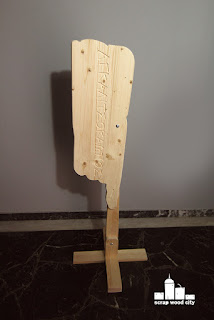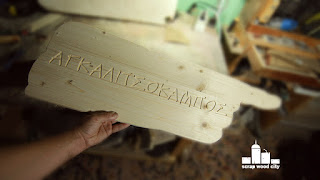For this project I used a few scrap spruce pieces I had on the shop.
Using my miter box I cut two pieces around the same size.
I glued those pieces temporarily, using double sided tape.
Using a ruler and a compass, I designed the arms of my saw. You can cut those with a fret saw but I cut them on my bandsaw.
Using a hand plane and sand paper I cleared the saw marks. I also drilled a few holes on my drill press.
I followed similar procedures to make the main cleat that unites the two arms.
All the saw pieces are joined with screws, washers and butterfly nuts.
I then trimmed a broken bandsaw blade to size using my wire cutter. I heated up the blade to reduce it’s hardness and drilled holes on it’s sides, using my drill press.
I used my bandsaw to make the slots for the blade to sit in. I also used my bandsaw to make a little stop block so that one arm won’t move. I attached that block, using screws. I also made pilot holes to prevent the wood from splitting.
I added the blade using screws as shafts.
For the blade’s tightening mechanism, I added a paracord kind of string which through rotation tightens the blade. This is the same technique we find on bucksaws and frame saws.
I also used a scrap wood piece to act as the string’s stopper.
Once my blade is tight I can start sawing!


























































